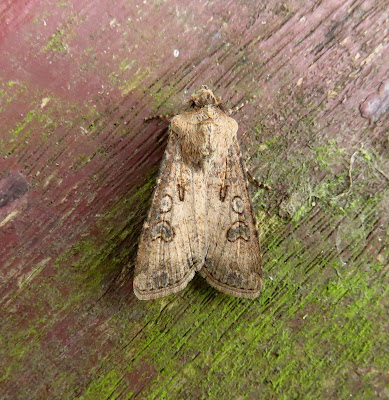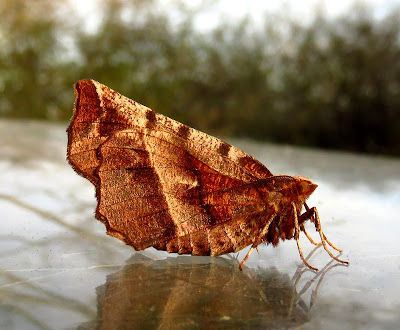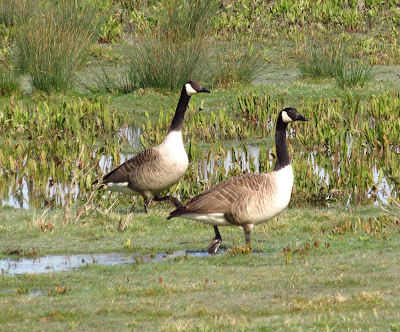There were lots of little lapwing chicks running about the park's grazing fields on Saturday 30th with at least eight on show. This chick pictured along with a sibling, appeared a few days older and slightly bigger than some of the other much smaller chicks.
At the park pond a pair of pochard were back again, two pairs of blackcap were feeding in the reedmace while a female reed bunting was unusual here.
Other songsters around the park on Saturday included 3+ lesser whitethroat, 5 common whitethroat, 2 chiffchaff, 4 blackcap, Cetti's warbler as well as a gathering of 4 song thrushes near the entrance. One whimbrel flew over calling.
Offshore 8 brent geese were seen flying along the edge of the mudflats in front of the park on Saturday.
The first swift of the spring at the park flew west over the car park in the morning of Friday 29th. Two swifts were seen over West Mersea the next day by Steve Entwistle.
At the park pond a pair of pochard were back again, two pairs of blackcap were feeding in the reedmace while a female reed bunting was unusual here.
Other songsters around the park on Saturday included 3+ lesser whitethroat, 5 common whitethroat, 2 chiffchaff, 4 blackcap, Cetti's warbler as well as a gathering of 4 song thrushes near the entrance. One whimbrel flew over calling.
Offshore 8 brent geese were seen flying along the edge of the mudflats in front of the park on Saturday.
The first swift of the spring at the park flew west over the car park in the morning of Friday 29th. Two swifts were seen over West Mersea the next day by Steve Entwistle.
This holly blue butterfly seen at the park on Saturday morning is the first butterfly of any kind seen at the park for a week or so because it's been so cold. It's the first holly blue sighting at the park this spring.
There were at least two adders enjoying the sunshine on Saturday at the park.
There were at least two adders enjoying the sunshine on Saturday at the park.
Two greylag geese at the park pond on Thursday 28th was a rare sight as they usually stay on the nearby grazing fields. A sparrowhawk flew over the pond and into the copse at the back.
A willow warbler was singing from trees by the corner pillbox on Thursday morning and a yellow wagtail flew over the car park.
On the grazing fields there was a roost of 250 black-tailed godwits on Thursday morning.
A willow warbler was singing from trees by the corner pillbox on Thursday morning and a yellow wagtail flew over the car park.
On the grazing fields there was a roost of 250 black-tailed godwits on Thursday morning.
The male corn bunting was singing from its usual wires along Chapmans Lane on Saturday early evening. Also seen at the same time were two house martins flying over the lane and nearby fields.
At Maydays a cuckoo was heard by Martin Cock, although the first one reported on the Island was a few days earlier by Peter Inson at East Mersea. A turtle dove was reported earlier in the week by the Walls family back at Willoughby car park.
At Maydays a cuckoo was heard by Martin Cock, although the first one reported on the Island was a few days earlier by Peter Inson at East Mersea. A turtle dove was reported earlier in the week by the Walls family back at Willoughby car park.
A red squirrel was at the garden feeder in Firs Chase at the beginning of Saturday, just before 7.30am. This one was also seen a few days back in the early evening on Wednesday 27th.























































